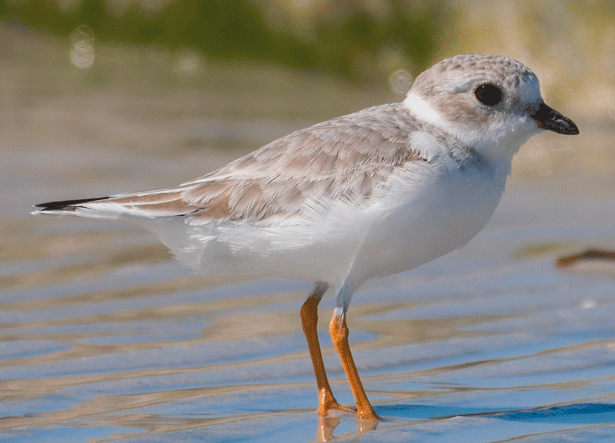At the break of dawn on 8th October Mary, Clive and I went to the Rio Salado in Conil de la Frontera for a spot of pre-breakfast birding. That way we’d make room for the hearty breakfast they served at our hotel, and we’d make the most of the best time of the day.
It was not quite light enough to bird well with the naked eye when we got there, although things were clearer through our binoculars. There were Sanderlings and Common Ringed Plovers, mostly on the far bank, and a single Greenshank and Black-winged Stilt. A black cat made a bird move, and we saw that it was a Stone Curlew. Now, with Stone Curlews at this time of the year, once you manage to focus on one it’s worth checking around for some more, which is what I did. Sure enough, there were more in a dry paddock beyond, and in all we counted over 60 Stone-curlews before moving on by foot towards the bridge that spanned the “river” (really not much of a river, all told).
Clive is a retired engineer, and not a birder, so he was quite pleased to give the footbridge a good going over while Mary and I continued looking at the waders. The next moment I was very glad that I was not alone, because I may eventually have convinced myself that I had dreamt it all up.
“Hey Mary! Have a look at this really pale Ringed Plover with really reddish legs!” I said. She immediately joined me and honed in on the bird which was only about 20 metres away and, now with the sun on our backs , we had no difficulty in seeing and comparing to the several Ringed Plovers around it.
The bird in question was, of course, the Piping Plover of the title, although at the time I had no idea of what it could be, only that it wasn’t anything I’d seen before. Could a leucistic Ringed Plover be discarded? That was the only possibility that I held onto briefly, in order not to get overexcited about a bird which just had to be a rarity. But what? Semipalmated Plovers look very similar to Common Ringed Plovers; Kentish Plovers have dark legs and what’s more, I was very familiar with all three “ringed” plover species of Europe.

I was thinking that it must be a bird from across the Atlantic, but even by going through the Collins bird guide in my head there was nothing that I could come up with.
Mary and I watched the bird in excellent light and down to about 15 metres for some 15 minutes before it occurred to me to try and get a photo. As I started trying to hold my phone to my scope’s lens the bird flew off upriver, and landed opposite where we had parked. We were now looking into the sun at a distant bird, and I still didn’t know what it was. So, the solution? Let’s go birding and get it on the way back.
“On the way back”. How many times have I said that in my professional career and what is the sorry – very sorry – success rate of such a ploy? Just doesn’t seem to work, not for me anyway.
The half hour birding was pretty good: Northern Wheatears, 2 Tawny Pipits, Yellow Wagtails all on migration, Audouin’s Gull, Red-legged Partridge, Hoopoe and a few other bits and pieces.
When we got back to the bridge the scene was very different from how we had left it. There were four men clad from head to toe in white PPE and green wellingtons, doing their best to remove all the dead fish they could find from the river on both banks. Of course there were almost no waders to be seen, let alone our mystery bird.
I kept my calm as best I could and delayed the internet search for our bird until I had a spare moment after breakfast. It didn’t take me long: I quickly found a photograph of a non-breeding Piping Plover with the reddish legs, pale sandy plumage, stubby black bill and large eye that we had both commented on while we still had the bird in front of us. When I showed the image to Mary she had no doubts either.
Piping Plover? Good grief! Surely that’s a first for Spain? If not for Europe …
Leave a Reply